Animals with names that start with the letter “X” are uncommon, and for most people, this part of the alphabet can be a mystery when it comes to wildlife. It can be hard to name even a few without turning to scientific databases or detailed biology resources.
Still, there are plenty of interesting species that start with X, both living and extinct. This article highlights them across categories such as mammals, reptiles, birds, fish, amphibians, insects, and ancient creatures. Whether you’re writing an animal alphabet list or satisfying personal curiosity, here’s a full breakdown of these rare and lesser-known names.
Why Are ‘X’ Animals So Rare?
The letter “X” is not commonly used at the beginning of English words. In biology, however, many animal names come from Greek or Latin. The prefix “Xeno-” means “foreign” or “strange,” which explains its use in scientific naming, especially for rare or unusual animals.
Because most names are rooted in taxonomy and discovery history, species starting with “X” tend to have origins linked to specific habitats or traits studied by early scientists.
Unique Animals That Start With the Letter X
1. Xami Hairstreak
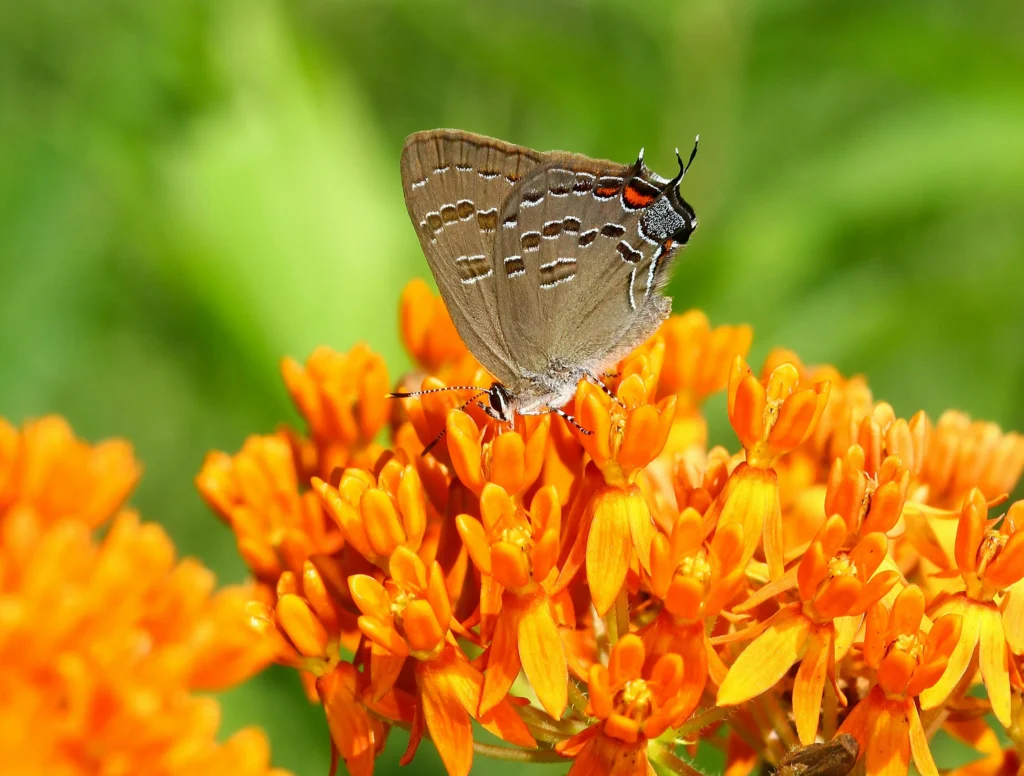
This butterfly is found in North and Central America. It’s small in size with delicate wings lined with dark and light streaks. It’s often spotted near oak trees and is known for its quick, darting flight patterns.
2. Xantus’s Hummingbird
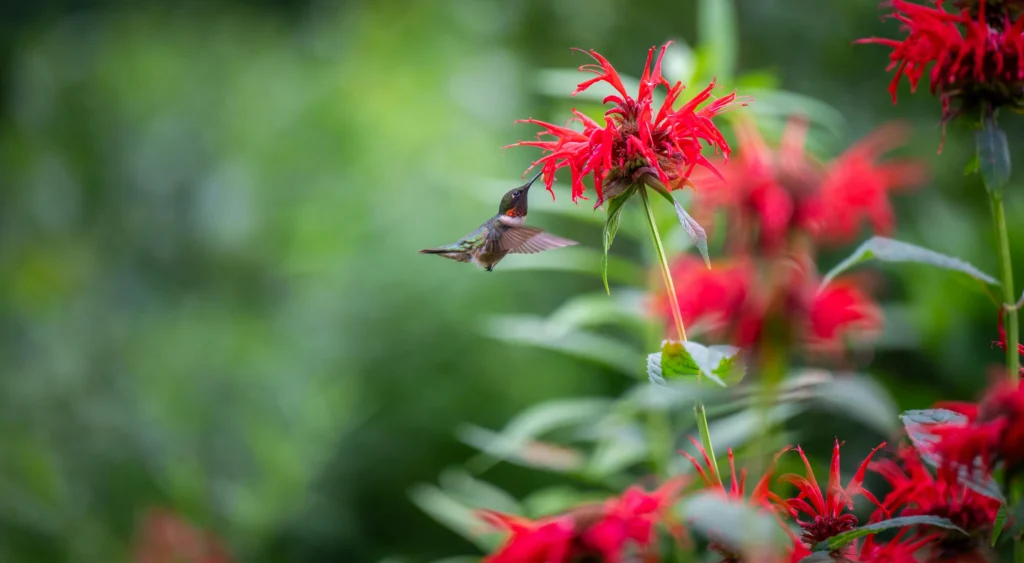
Native to Baja California, this bird features shimmering green feathers and a straight black bill. Males often have a bold white stripe behind the eye. It feeds on nectar and is commonly seen in scrublands and coastal habitats.
3. Xanthippe’s Shrew
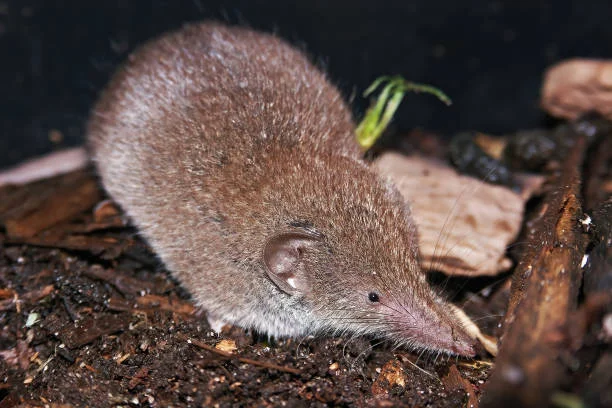
credit: Wikipedia
A small mammal from East Africa, usually found in dry savanna regions. It has a long snout and sharp teeth used to feed on insects. Because it’s rarely observed in the wild, scientists still know little about how it behaves.
4. Xanthichthys mento
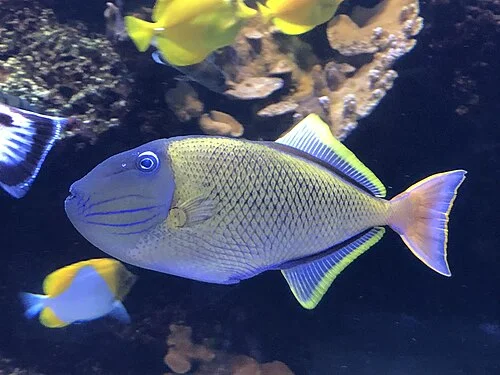
credit: Wikipedia
Commonly known as the blue-throated triggerfish, it lives among coral reefs in the Pacific Ocean. Its body is marked with geometric patterns. Known for its calm nature, this species is a popular choice for saltwater aquarium enthusiasts.
5. Xantic Sargo
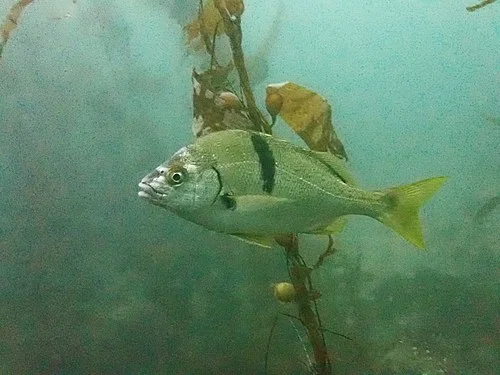
credit: Wikipedia
A coastal fish found in the Eastern Pacific, especially near rocky shores. It’s silver-gray and travels in small groups. It feeds on algae, invertebrates and is a favorite among recreational fishers.
6. Xantho poressa
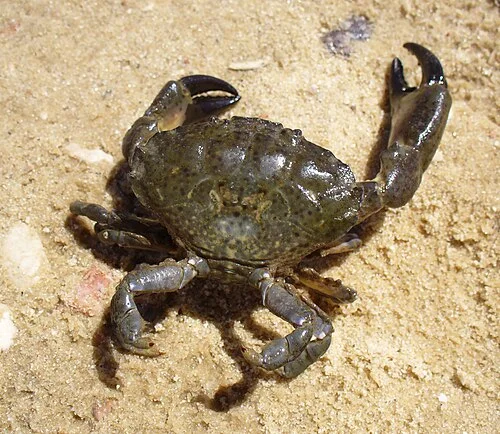
credit: Wikipedia
A Mediterranean crab with a dark, mottled shell and broad pincers. It lives in rocky sea beds and hides under stones during the day.
7. Xantusiidae
A family of small lizards found mostly in Mexico and the southwestern U.S. They are nocturnal and often live under rocks or in leaf litter. Their eyes do not have eyelids, a trait shared with geckos.
8. Xavier’s Greenbul
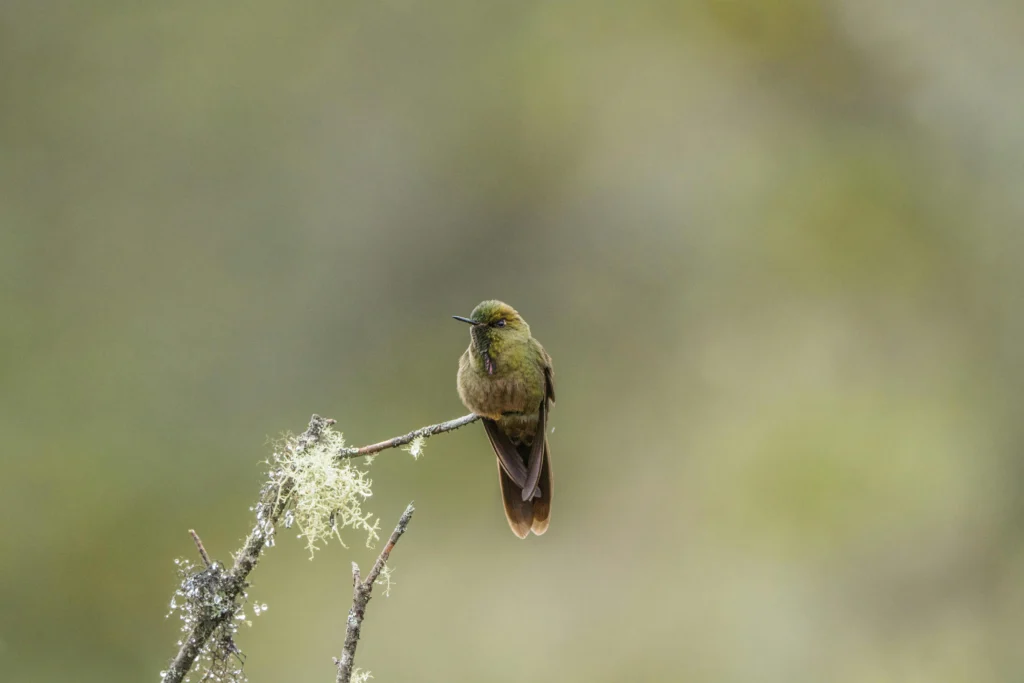
A small songbird from Central Africa, often found in dense forests. With muted green plumage and a lighter neck, this bird is recognized by its gentle, whistling vocal patterns.
9. Xeme (Xema sabini)
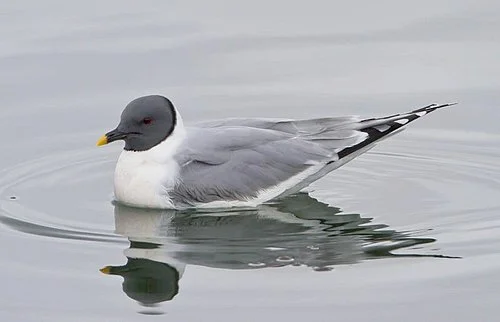
credit: Wikipedia
Also called Sabine’s Gull, this bird migrates from the Arctic to the Atlantic and Pacific coasts. It’s easily identified by its forked tail and black head during the breeding season. Its diet mainly consists of tiny fish and water-dwelling insects.
10. Xenarthra
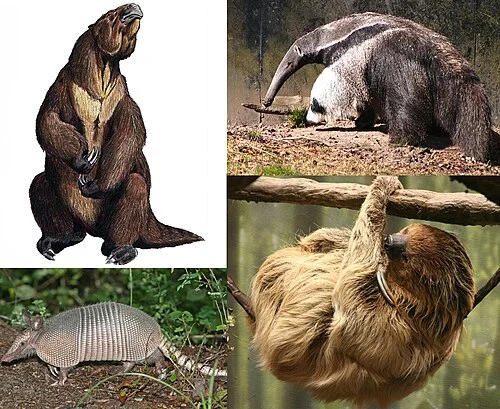
credit: Wikipedia
This mammal group includes sloths, anteaters, and armadillos. Found mainly in South and Central America, members have specialized joints in their spines. They are known for slow movement and strong claws.
11. Xenocalamus transvaalensis
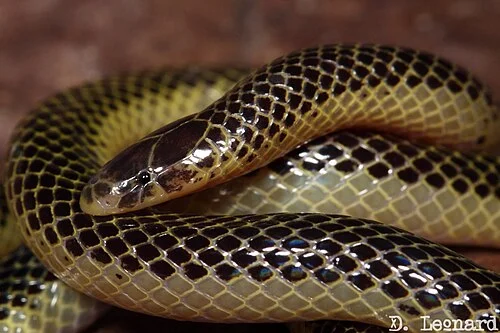
credit: Wikipedia
A rear-fanged, mildly venomous snake from southern Africa. It lives in sandy soils and is rarely seen during the day. It has a flat, narrow head suited for burrowing.
12. Xenodermus
Also called the dragon snake, it has ridged, armored scales. Found in Southeast Asia, it thrives in damp, tropical climates. When threatened, it becomes stiff and unresponsive.
13. Xenodon merremii
A South American snake that mimics venomous species to ward off predators. It often flattens its head to appear more dangerous. It is harmless to humans and preys on amphibians.
14. Xenodon pulcher
This colorful snake is recognized by its bright bands and spotted head. It lives in tropical forests and wetlands. Like others in its genus, it is non-venomous and feeds on frogs and lizards.
15. Xenodon severus
Native to the Amazon basin, this snake displays impressive pattern variations. This snake is most active at dusk and tends to stay in moist, swampy regions. Its mimicry behavior helps it avoid predators.
16. Xenohyla eugenioi
A tree frog from Brazil that occasionally eats fruit, an uncommon trait among amphibians. Inhabiting Brazil’s Atlantic Forest, it stays hidden during the day and becomes active at night. Little is known about its population status.
17. Xenohyla truncata
Also from Brazil, this frog lives in bromeliads and shelters in leaf axils. It’s one of the few amphibians observed eating fruit. Its reproductive habits align with seasonal rains.
18. Xenopeltis hainanensis
Nicknamed the sunbeam snake, it’s known for its glossy scales that reflect light in iridescent colors. It spends most of its life underground. This snake is harmless and found in southern China.
19. Xenops rutilans
A forest bird found across tropical South America. It clings to tree trunks and uses its sharp bill to find insects. Its upper side is cinnamon-brown, contrasting with a lighter underside.
20. Xenopus boumbaensis
A clawed frog species from Cameroon. It is aquatic and has a flattened body adapted for life in water. Its webbed feet help it swim efficiently.
21. Xenopus laevis
Commonly used in scientific research, this African frog has muscular legs and lives fully submerged in water. It produces calls underwater and eats almost anything it can fit in its mouth.
22. Xenorhina arfakiana
A small frog from Papua New Guinea. It stays hidden beneath fallen leaves and has a long, pointed snout. It is mostly active during rainstorms.
23. Xenorhina eiponis
Another frog from Papua New Guinea, known for its camouflage. It resides in high-altitude forests. Its vocalizations are short and difficult to detect.
24. Xenorhina huon
Named after the Huon Peninsula, this species is poorly studied. It is part of a group of frogs with direct development, skipping the tadpole stage.
25. Xenorhina obesa
A robust, ground-dwelling frog that prefers tropical forest floors. Nocturnal by nature, it searches for tiny invertebrates after dark.
26. Xenorhina parkerorum
Recognized for its unique coloration, this frog is rare in collections. Researchers have documented this species in very limited field observations. It lives among moss and damp foliage.
27. Xenorhina tumulus
This frog species is adapted to mound habitats. It emits a faint call during the mating season and is difficult to locate.
28. Xenopholis werdingorum
A rarely encountered South American snake. It is non-venomous and prefers remote, forested habitats. Very few specimens have been studied.
29. Xenotyphlops Grandidieri
A small blind snake found in Madagascar. It has reduced eyesight and lives underground. It feeds on termites and other soft-bodied insects.
30. Xerotyphlops vermicularis
Also known as the European worm snake, this species resembles an earthworm. It is non-venomous and hides under rocks and soil.
31. Xestospongia testudinaria
Called the barrel sponge, this large sponge is found in Indo-Pacific coral reefs. It can live for hundreds of years. Its massive structure offers shelter to various marine creatures.
32. Xeros (includes Xerus inauris)
A genus of African ground squirrels known for social living. They dig extensive burrow networks. Members have strong claws and bushy tails.
33. Xerus inauris
Active during daylight hours, this ground squirrel is frequently spotted in South Africa’s grasslands. It uses its tail as shade and lives in colonies for protection.
34. Xingan Salamander
Native to China, this salamander inhabits cool mountain streams. This amphibian features a streamlined shape and silky skin texture. It prefers shaded, moist areas.
35. Xingu River Ray
A freshwater stingray found in Brazil’s Xingu River. It has a flat, round body with a pattern of spots. It feeds on small fish and crustaceans.
Read Also: How to Cancel Your Curology Subscription 3 Easy Methods
36. Xiphactinus
This ancient predator reached lengths of nearly 20 feet during the Cretaceous period.
It had large teeth and could swallow prey whole. Fossils often include other fish inside their stomachs.
37. Xipholeptos
A little-known genus of squid from deep ocean waters. Its biology and behavior remain largely undocumented. It may use bioluminescence to attract prey.
38. Xiphosura
Horseshoe crabs belong to this group. They have existed for over 400 million years. Their unique blue blood is valued in the medical field for detecting bacterial contamination.
39. Xylocopa aerata
A bright green carpenter bee native to Australia. It burrows into wood to build its nest and helps fertilize plants by spreading pollen. It is solitary and rarely aggressive.
40. Xylocopa bombylans
A large bee with fuzzy hair, found in Asia. It builds tunnels in dead wood. These bees are key pollinators in their habitats.
41. Xylophaga dorsalis
A marine mollusk that drills into waterlogged wood. It plays a role in recycling submerged wood. It is part of a niche ecosystem in coastal waters.
42. Xylophagous Insects
These insects feed on wood and include beetles and termites. They contribute to forest decomposition. Some species are considered pests in homes.
43. Xylophanes tersa
A moth with streamlined wings and fast flight. Its caterpillars feed on plants like pentas and starflowers. Adults are often mistaken for hummingbirds.
44. Xylophis perroteti
A tiny snake from southern India. It is secretive and lives under leaf litter. It preys on small invertebrates.
45. Xylophis stenorhynchus
Closely related to X. perroteti, this snake is also endemic to India. It has a pointed snout and is adapted for burrowing.
46. Xylota segnis
A hoverfly that mimics bees for protection. It is commonly found in gardens and woodlands. Adults feed on nectar, while larvae live in decaying wood.
Extinct and Prehistoric Animals That Start With X
47. Xenacanthus
An ancient shark with an eel-like body. It lived in freshwater environments. Fossils date back more than 300 million years and show it had a distinctive spine projecting from the back of its head.
48. Xenoceratops
A horned dinosaur from what is now Canada. It had a large frilled skull and facial horns. It lived during the Late Cretaceous period and was a plant-eater.
49. Xenoposeidon
Known from a single vertebra, this sauropod dinosaur was discovered in England. It’s believed to have had a unique backbone structure, though only limited fossil evidence exists.
50. Xenotarsosaurus
A carnivorous dinosaur from Argentina, thought to be a distant relative of Tyrannosaurus. It had strong hind legs and sharp teeth, suggesting it was an active predator.
51. Xiaosaurus
A small herbivorous dinosaur from China. It lived during the Jurassic period and walked on two legs. Its fossils suggest it may have had some features linking it to early bird-like dinosaurs.
52. Xiaotingia
A feathered dinosaur with features shared by both birds and other non-avian dinosaurs. It played a significant role in the scientific debate on the origins of birds.
53. Xiongguanlong
This dinosaur lived around 125 million years ago in what is now China and belonged to the early tyrannosauroid lineage. It had a long snout and was smaller than later members of its lineage, like Tyrannosaurus rex.
Fun Facts About Animals That Start With X
Xoloitzcuintli, also known as the Mexican hairless dog, is an old dog breed that is once considered sacred by the Aztecs.
- Xenopus frogs can regenerate limbs and are often used in research laboratories.
- X-ray tetra is named after its transparent body.
- Xenarthra includes animals with unusual joint structures.
- Many Xenodon hoses mimic toxic species as a defense mechanism.
Educational use for this list: Animals That Start With X
This collection may be useful for:
- Alphabet-based animal projects for students
- Biology classes covering taxonomy or species classification
- Crosswords and trivia games
- Language pupils expanding vocabulary
Teachers and students may benefit from expanding understanding beyond the usual “X is for Xylophone” approach. Laying animals with “X” provides the opportunity for both scientific involvement and language development.
Complete Table Animals That Start With X
| No. | Animal Name | Type | Region / Trait |
|---|---|---|---|
| 1 | Xami Hairstreak | Insect (Butterfly) | North & Central America |
| 2 | Xantus's Hummingbird | Bird | Baja California |
| 3 | Xanthippe's Shrew | Mammal | East Africa |
| 4 | Xanthichthys mento | Fish | Pacific Ocean reefs |
| 5 | Xantic Sargo | Fish | Eastern Pacific |
| 6 | Xantho poressa | Crustacean (Crab) | Mediterranean Sea |
| 7 | Xantusiidae | Reptile (Lizard family) | Mexico, SW US |
| 8 | Xavier's Greenbul | Bird | Central Africa |
| 9 | Xeme (Xema sabini) | Bird (Gull) | Arctic to coastal regions |
| 10 | Xenarthra | Mammal Order | Central & South America |
| 11 | Xenocalamus transvaalensis | Reptile (Snake) | Southern Africa |
| 12 | Xenodermus | Reptile (Dragon Snake) | Southeast Asia |
| 13 | Xenodon merremii | Reptile (Snake) | South America |
| 14 | Xenodon pulcher | Reptile (Snake) | Tropical Forests |
| 15 | Xenodon severus | Reptile (Snake) | Amazon Basin |
| 16 | Xenohyla eugenioi | Amphibian (Frog) | Brazil |
| 17 | Xenohyla truncata | Amphibian (Frog) | Brazil |
| 18 | Xenopeltis hainanensis | Reptile (Snake) | Southern China |
| 19 | Xenops rutilans | Bird | South America |
| 20 | Xenopus boumbaensis | Amphibian (Frog) | Cameroon |
| 21 | Xenopus laevis | Amphibian (Frog) | Africa |
| 22 | Xenorhina arfakiana | Amphibian (Frog) | Papua New Guinea |
| 23 | Xenorhina eiponis | Amphibian (Frog) | Papua New Guinea |
| 24 | Xenorhina huon | Amphibian (Frog) | Papua New Guinea |
| 25 | Xenorhina obesa | Amphibian (Frog) | Tropical Forests |
| 26 | Xenorhina parkerorum | Amphibian (Frog) | Papua New Guinea |
| 27 | Xenorhina tumulus | Amphibian (Frog) | High-altitude PNG |
| 28 | Xenopholis werdingorum | Reptile (Snake) | South America |
| 29 | Xenotyphlops grandidieri | Reptile (Blind Snake) | Madagascar |
| 30 | Xerotyphlops vermicularis | Reptile (Snake) | Europe |
| 31 | Xestospongia testudinaria | Marine Sponge | Indo-Pacific Reefs |
| 32 | Xeros | Mammal (Rodent genus) | Africa |
| 33 | Xerus inauris | Mammal (Squirrel) | South Africa |
| 34 | Xingan Salamander | Amphibian (Salamander) | China |
| 35 | Xingu River Ray | Fish (Stingray) | Brazil |
| 36 | Xiphactinus | Prehistoric Fish | Extinct |
| 37 | Xipholeptos | Squid (Genus) | Deep Ocean |
| 38 | Xiphosura | Marine Arthropod | Worldwide (Ancient) |
| 39 | Xylocopa aerata | Insect (Bee) | Australia |
| 40 | Xylocopa bombylans | Insect (Bee) | Asia |
| 41 | Xylophaga dorsalis | Mollusk | Marine - wood borers |
| 42 | Xylophagous Insects | Insect Group | Global |
| 43 | Xylophanes tersa | Insect (Moth) | Americas |
| 44 | Xylophis perroteti | Reptile (Snake) | India |
| 45 | Xylophis stenorhynchus | Reptile (Snake) | India |
| 46 | Xylota segnis | Insect (Hoverfly) | Europe |
| 47 | Xenacanthus | Extinct Shark | Prehistoric freshwater |
| 48 | Xenoceratops | Dinosaur | Canada (Cretaceous) |
| 49 | Xenoposeidon | Dinosaur | England (Sauropod) |
| 50 | Xenotarsosaurus | Dinosaur | Argentina |
| 51 | Xiaosaurus | Dinosaur | China |
| 52 | Xiaotingia | Dinosaur/Bird-like | China |
| 53 | Xiongguanlong | Dinosaur | China |
Final thoughts
While animals that start with x are not as common as those that begin with other letters, they exist and cover a surprising selection of species.
From frogs eating fruit to extinct predators, the letter “x” has more biodiversity than expected. If you make an animal list or just want to learn something new, these creatures offer a lot to remember.




